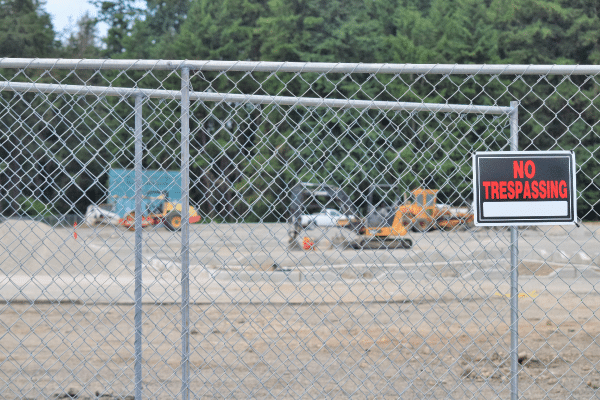Boundary Fence Setback: Minimum Requirement for Property Lines

As you navigate the world of construction and aim to expand your skills and knowledge, it’s crucial to understand the requirements and regulations surrounding boundary fences. In this informative blog post, we’ll dive into the topic of building fences on boundary lines, exploring the minimum setback requirements, and shedding light on why this is essential. At Builders Academy Australia, we offer flexible study options and have earned the distinction of being Australia’s most awarded building and construction trainer. Let’s delve into the world of boundary fence setbacks and equip you with the information you need.
Building Fence on Boundary Line: Defining the Setback
When it comes to building a fence on a boundary line, it refers to constructing a fence that sits directly on or very close to the property line shared with your neighbour. The setback, in this context, is the minimum distance required between the boundary line and the fence structure.
Why is the fence setback important?
- Respecting Property Boundaries: The setback requirement ensures that you respect your neighbour’s property boundaries, preventing any encroachment or disputes.
- Maintaining Access and Visibility: Adequate setback allows for easy access to the area between the fence and the boundary line, facilitating maintenance, repairs, and potential future developments.
- Fire Safety Considerations: Proper setback helps prevent the spread of fire between properties, protecting both you and your neighbours.
Proper fence setbacks not only contribute to harmonious neighbourhood aesthetics and respectful property boundaries but also play a significant role in ensuring safety and functionality.
Let’s explore this in more detail!
When a fence is constructed with the appropriate setback, it allows ample space for maintenance activities such as cleaning, painting, and repairs. Having easy access to both sides of the fence ensures that you can keep it in good condition and address any issues promptly.
By adhering to setback requirements, you also help maintain unobstructed views and access to natural light for both your property and your neighbours’. And of course building a fence that encroaches on your neighbour’s property can lead to disputes and potential legal complications. Understanding and following the setback regulations helps prevent conflicts, ensuring a peaceful coexistence with those around you.
It goes without saying that fence setbacks are also essential for fire safety, allowing adequate space between properties to minimise the risk of fire spreading. This helps protect lives, properties, and the overall community in the event of a fire incident.
Along these lines, insurance policies may have specific requirements regarding fence setbacks. Ensuring that your fence meets these setback requirements can help maintain the validity of your insurance coverage and provide peace of mind in case of any unforeseen incidents.
Things to Consider When Building a Fence on the Boundary Line
- Consult Local Regulations: Building codes and regulations regarding a fence setback varies by location and can be governed by local councils or authorities. It’s essential to familiarise yourself with the specific requirements in your area.
- Communication with Neighbors: Before embarking on a boundary fence project, it’s courteous and recommended to discuss your plans with your neighbours. Maintaining open communication can help address any concerns or potential conflicts.
- Observe Height Restrictions: In addition to setbacks, there may be restrictions on the height of the fence. Understanding these limitations ensures compliance and harmonious neighbourhood aesthetics. Victoria’s boundary fence height is subject to specific limitations that must be understood to ensure compliance. In residential areas, the maximum allowable height for a boundary fence is generally determined by local council regulations. These regulations aim to maintain neighborhood aesthetics, privacy, and safety. Typically, front boundary fences have stricter height restrictions than those at the rear or sides of a property. It is essential to consult the local council or relevant authorities to ascertain the specific limitations for a particular location. Adhering to these guidelines ensures that property owners maintain a harmonious streetscape while enjoying the benefits of a well-designed and appropriately sized boundary fence.
Studying with Builders Academy Australia: Your Path to Success
At Builders Academy Australia, we understand the importance of continuous learning and professional development. Whether you’re aiming to upskill, advance your career, or pass your licensing exam, we offer tuition fee-free study options, allowing you to pursue further education even if you already hold a qualification. Our flexible study options, including online and evening classes, are designed to fit around your busy schedule.
Understanding the minimum setback requirements for building a fence on a boundary line is vital for a successful construction project. Respecting property boundaries, ensuring access and visibility, and adhering to fire safety considerations are essential aspects of being a responsible and skilled tradie.
Contact Builders Academy Australia today to explore our comprehensive training programs and take the next step toward passing your licensing exam and advancing your construction career.

